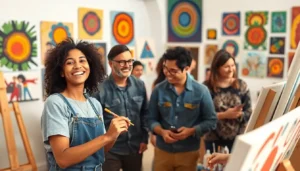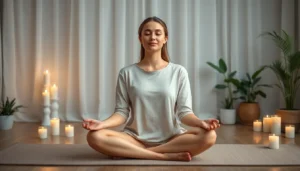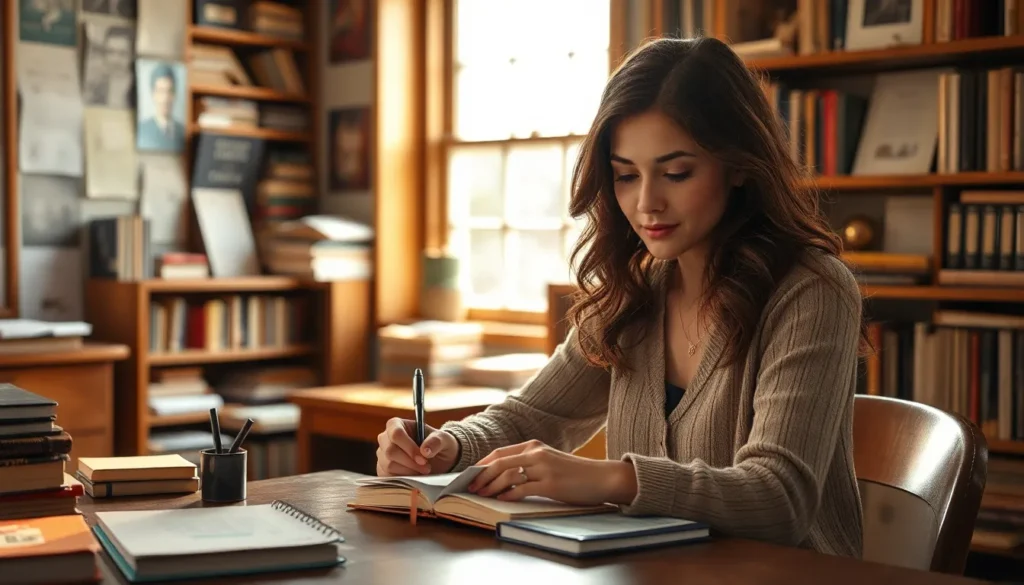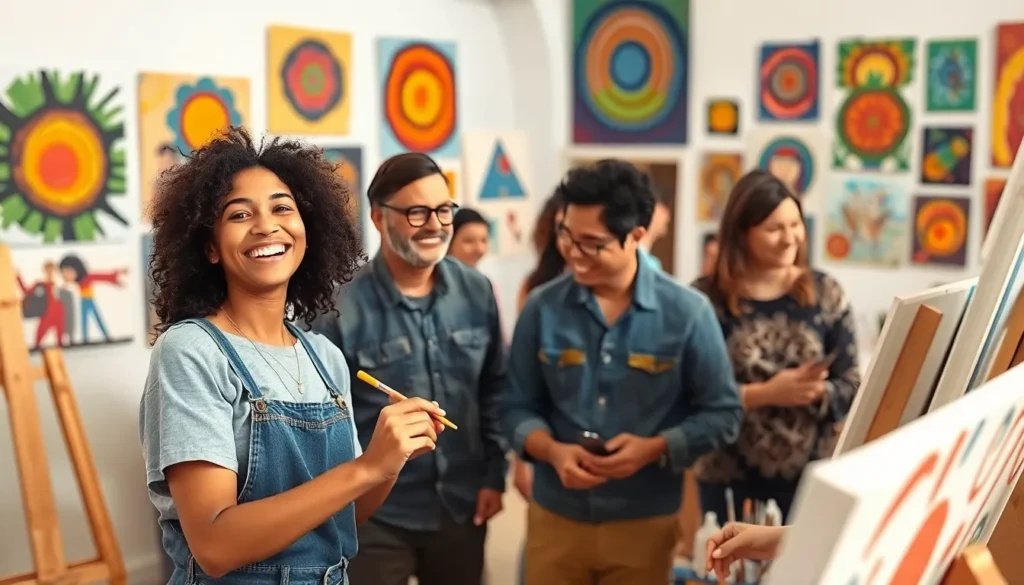Table of Contents
ToggleImagine a world where creativity flows like a river and emotions dance like confetti at a parade. That’s the magic of expressive arts. It’s not just about painting pretty pictures or strumming a guitar; it’s a vibrant tapestry of self-discovery and connection. Whether it’s through music, dance, or visual arts, expressive arts invite everyone to unleash their inner Picasso or Beyoncé, no prior experience required.
Overview of Expressive Arts
Expressive arts play a crucial role in enhancing creativity and emotional well-being. This multifaceted domain encourages individuals to explore their feelings through various artistic means.
Definition and Scope
Expressive arts include diverse forms such as music, dance, drama, and visual arts. This approach emphasizes the process of creation rather than the final product. Creativity emerges as participants engage through improvisation, storytelling, and movement. Many benefits arise from participation, including improved self-esteem and communication skills. Expressive arts invite people of all ages and backgrounds to connect and share their experiences without judgment. These activities provide safe spaces for expressing emotions and fostering personal growth.
Historical Context
Expressive arts trace back to ancient cultures, where art served therapeutic purposes. In many societies, rituals combined music, dance, and visual elements to promote healing and connection. The 20th century marked the emergence of expressive arts therapies, integrating psychology with creative practices. Psychologists like Carl Jung highlighted the significance of art in uncovering the unconscious mind. Over the years, these therapies developed, gaining recognition in educational and clinical settings. The evolution reflects a growing understanding of art’s impact on emotional and psychological health. Expressive arts continue to offer new avenues for self-exploration and healing today.
Benefits of Expressive Arts
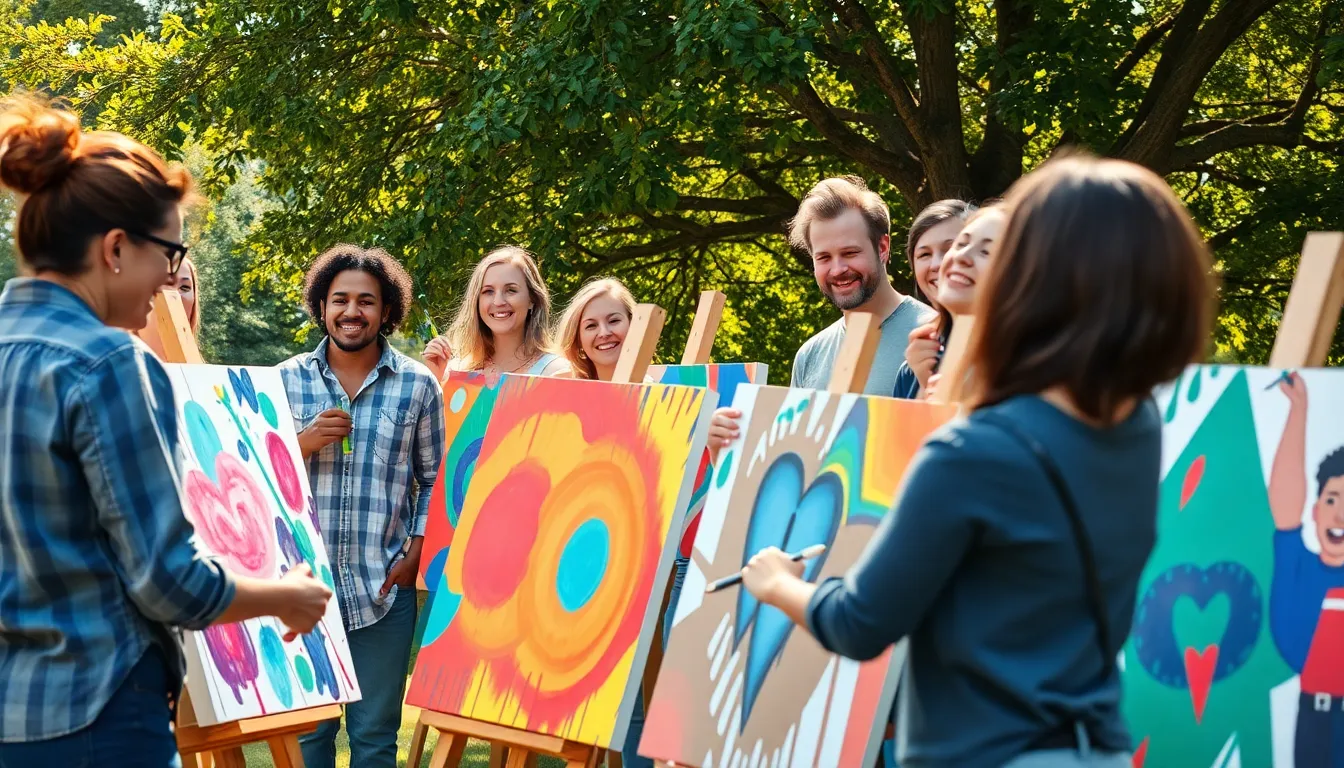
Expressive arts provide numerous advantages across various aspects of life. Engaging in these activities nurtures creativity, emotional expression, and personal growth.
Emotional Well-Being
Participating in expressive arts fosters emotional well-being. Individuals often experience reduced stress levels and increased feelings of joy. Engaging in creative practices, such as painting or dancing, offers a release for pent-up emotions. Those involved find safe spaces where they can share feelings and connect with others. Many studies emphasize the therapeutic effects of art, correlating participation with decreased anxiety and depression rates. Group activities also enhance social bonds, leading to improved communication skills.
Cognitive Development
Expressive arts play a significant role in cognitive development. Activities like drama or music challenge the brain and stimulate critical thinking. Engaging in the creative process sharpens problem-solving abilities. Participants often develop better focus and attention, which aids learning in other areas. Research shows that artistic expression can enhance memory and improve emotional intelligence. Furthermore, creating art encourages innovation, allowing individuals to think outside the box. Overall, those who participate in expressive arts often demonstrate greater cognitive flexibility.
Key Modalities in Expressive Arts
Expressive arts include various modalities that facilitate creativity and emotional expression. Each form serves a unique purpose and engages individuals in different ways.
Visual Arts
Visual arts encompass painting, drawing, sculpture, and photography. Participants express emotions through colors and shapes, allowing for personal exploration. Art therapy often utilizes these modalities to improve mental health. Many individuals find solace and communication through their creations. Engaging with visual arts fosters self-exploration. Studies demonstrate that creating art can reduce anxiety and enhance overall well-being.
Performing Arts
Performing arts include dance, theater, and music. These activities often involve collaboration, encouraging social connection. Engaging in theater allows individuals to explore characters and emotions. Dance promotes physical expression, enhancing body awareness and coordination. Additionally, music enlivens the spirit, often evoking deep emotional responses. Participation in performing arts builds confidence and communication skills, offering catharsis.
Literary Arts
Literary arts focus on writing and storytelling, offering a platform for self-expression. Poetry, prose, and creative writing help articulate complex thoughts and feelings. Through words, individuals can connect with others or reflect internally. Workshops encourage exploration of personal narratives in a supportive environment. Furthermore, engaging with literature promotes empathy and understanding. Studies reveal that writing can serve as an effective therapeutic tool for emotional processing.
Applications of Expressive Arts
Expressive arts find their applications across numerous sectors, including therapy, education, and community initiatives. Each area leverages creativity to enhance well-being and foster connections among individuals.
Therapeutic Settings
In therapeutic settings, expressive arts serve as tools for emotional healing. Therapists incorporate activities like art, music, and dance to help clients articulate feelings they struggle to express verbally. These modalities encourage self-discovery and provide a safe environment for exploring emotions. Research consistently shows that engaging in art therapy can reduce symptoms of anxiety and depression. Healing occurs through creative expression, which validates personal experiences and facilitates dialogue between therapist and client.
Educational Environments
Educational environments utilize expressive arts to enhance learning experiences and improve student engagement. Schools implement art programs to cultivate creativity while promoting social and emotional development. Activities such as drama and music education foster collaboration among peers and can improve communication skills. Educators find that integrating expressive arts into curricula boosts students’ confidence and encourages critical thinking. By emphasizing the creative process over outcomes, students develop resilience and adaptability—skills crucial for lifelong success.
Community Programs
Community programs benefit from expressive arts by fostering social connection and collective healing. Various organizations host workshops and events that involve local artists and participants from diverse backgrounds. These programs emphasize inclusivity and invite individuals to express their unique narratives through creativity. Participating in community arts initiatives can reduce isolation and strengthen local bonds. Engagement in these activities transforms shared experiences into opportunities for empathy and understanding among the community members.
Expressive arts remain a powerful avenue for creativity and emotional exploration. By engaging in various forms of artistic expression, individuals unlock their potential and discover new ways to communicate their feelings. The benefits extend beyond personal enjoyment; they foster connections and enhance overall well-being.
Whether through visual arts, performing arts, or literary arts, the impact of expressive practices is profound. They not only provide therapeutic benefits but also enrich educational and community experiences. As people continue to embrace these creative outlets, the transformative power of expressive arts will undoubtedly thrive, promoting healing and connection across diverse communities.




